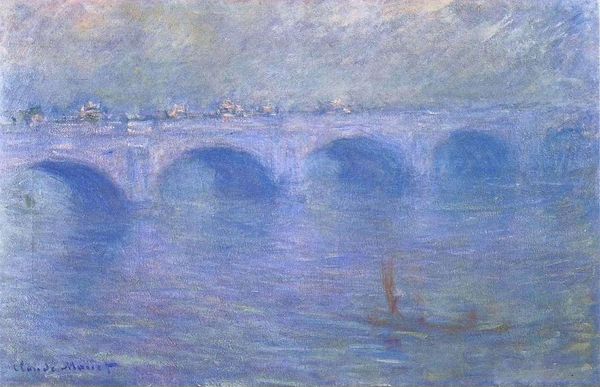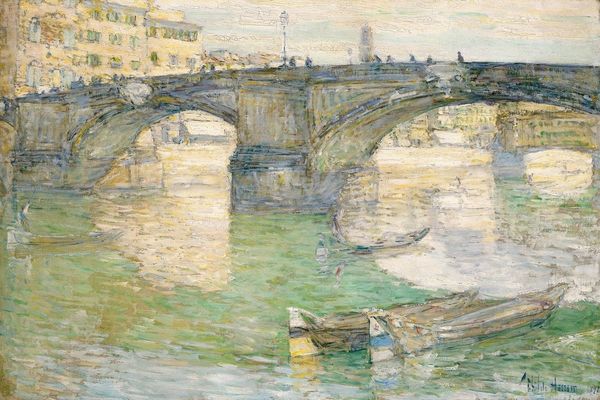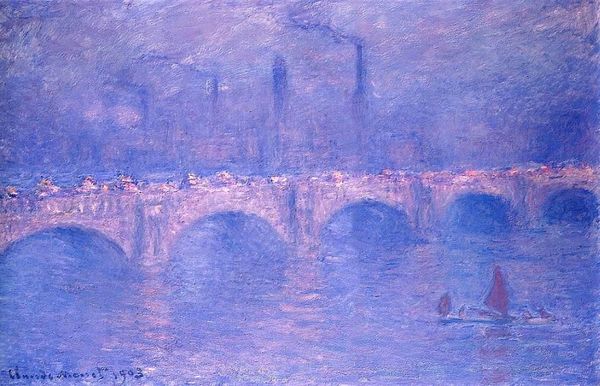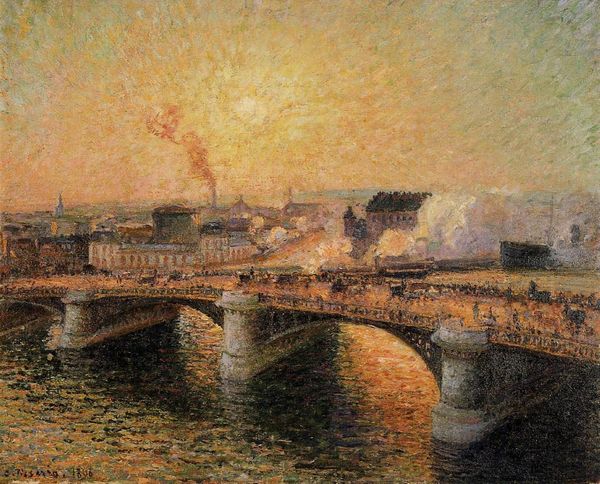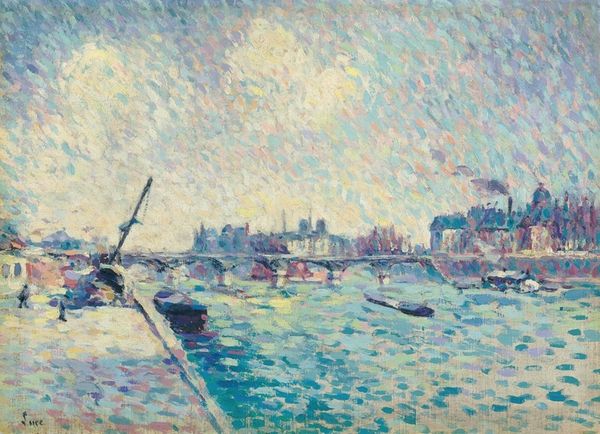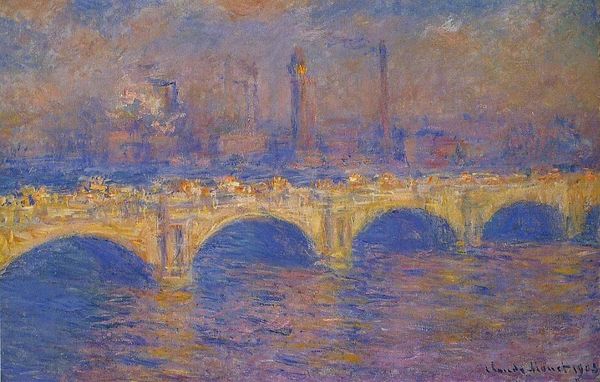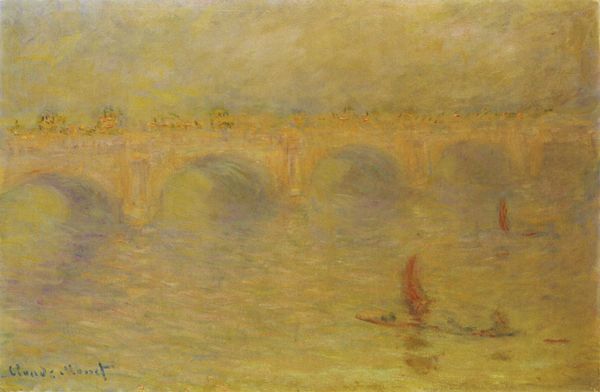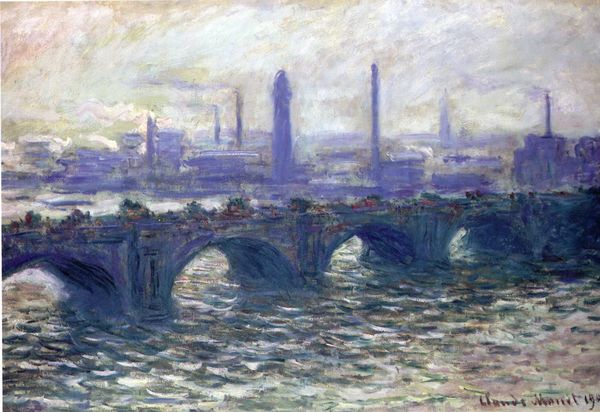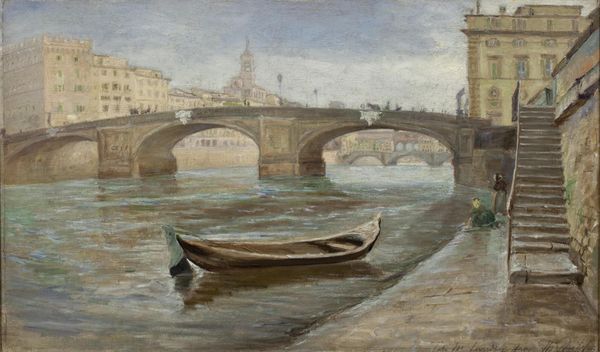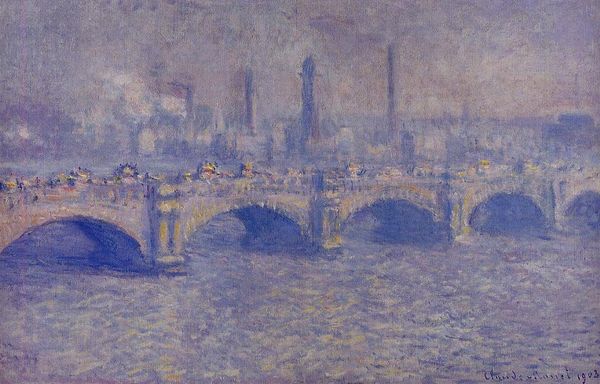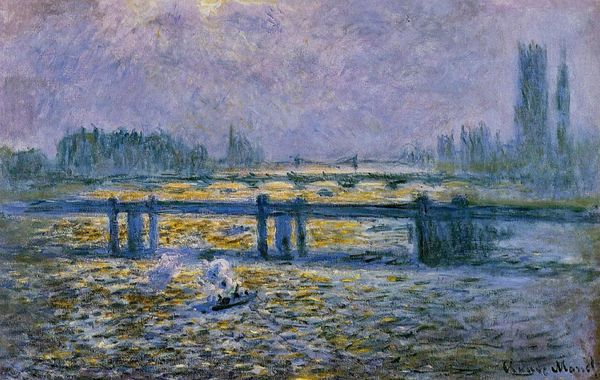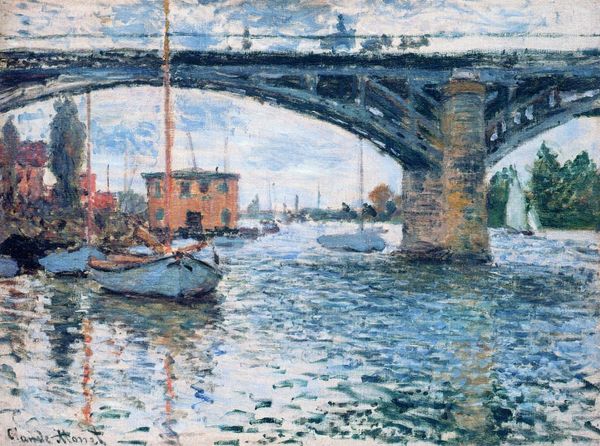
Copyright: Public domain
Curator: Before us hangs Claude Monet's "Waterloo Bridge," an oil on canvas completed in 1901. Editor: My first thought is the muted palette; everything seems to bleed into a golden fog. It’s a city rendered almost spectral. Curator: Observe how Monet captures the essence of light interacting with atmosphere. Notice the fragmented brushstrokes; color becomes structure. He's dissolving form, isn’t he? Refusing any stark lines, he gives precedence to pure optical sensation. Editor: Right. That fog wasn't just atmospheric, though; it was a consequence of intense industrial pollution. Monet was painting London at the height of its imperial power but also amidst considerable social inequality and devastating environmental degradation. The dreamy surface belies that harsh reality. Curator: But isn’t his use of short brushstrokes intended to dissolve the solid structure of the bridge? He is reducing the bridge to pure light. This technique is more focused on how we perceive form, not the forms themselves. Editor: And perhaps that's the point. Monet's impressionistic technique inadvertently captured the impermanence of that era’s social and environmental conditions. That dreamlike quality makes the painting more potent as a critique. These impressions, so focused on individual perception, unintentionally reveal the collective realities. Curator: I concede to your perspective, I maintain his radical formal experimentation divorced art from academic tradition. Color and light liberate art, transforming art, becoming the subject, no longer merely representing it. Editor: Yes, that break is important. However, his work also unwittingly reflects the zeitgeist—a period where rapid industrial growth created both great wealth and deep problems. I’d say that is an intentional formal experimentation, but to ignore his broader environment is an act of ignorance. Curator: Your commentary certainly casts a new…light on Monet's undertaking. Editor: Indeed. The beauty, it seems, conceals far more than initially meets the eye.
Comments
No comments
Be the first to comment and join the conversation on the ultimate creative platform.
